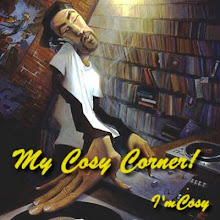A Five-Part Formula for Making a Content-Rich Speech
If you want to be known as a content-rich speaker, you will want to follow my PARTS Formula.
(By Craig Valentine, 1999 World Champion of Public Speaking)
P = Phrase
Have you ever seen a story or speech that was all over the place? Have you ever given one? Chances are this is because the speaker did not start creating the speech in the right place. You should start creating each story (or other anchor) by writing out your Foundational Phrase. This is the phrase upon which that entire story is built.
For example, I tell a story about a boss who tried to keep me with the company by offering me more money. The Foundational Phrase to that story is “Your Dream is not for sale.” This is the point my audience walks away remembering. If you want your audience to remember your point, then leave them with powerful Foundational Phrases for each anchor you use. Make sure these phrases are fewer than 10 words.
A – Anchor
Every point you make should be anchored by an illustration of some kind. I use 4 kinds of anchors in almost every speech I give. I call these my “4 As for For Anchors.” They are
1. Anecdote (a story)
2. Activity
3. Analogy
4. Acronym
You probably already know that the essence of public speaking is to “tell a story and make a point (i.e. Bill Gove).” However, in longer speeches, you should mix up your anchors and use activities, analogies, and acronyms along with your anecdotes. Just make sure every single point you make is illustrated with an anchor. When your audience remembers the anchor, they will not forget the point, especially if the point is made using a strong Foundational Phrase.
R = Reflection
It’s not good enough for our audience to listen to us. Our job is to get them to listen to themselves. Through our speech, they should think and realize how they will use the tools (processes, formulas, recipes, steps, etc.) to improve their own lives. To do this, we must get them to reflect rather than just listen. You can do this by asking questions before, during, and after your anchor. For example:
- Before getting into the story I mentioned above, I ask, “What do you think is the number one thing that stands between most people and their dreams.”
- During the story, I talk about how we sometimes let the good get in the way of the best. I then turn to my audience and ask, “When it comes to your goals and dreams, are you too good to be great?”
- After the story, I ask my initial question again by stating, “So let me ask you now, what is the number one thing that stands between most people and their dreams?” Hopefully they have changed their perspective a bit because of the anchor.
Another example I use is in regards to imagination as I explain how I stepped on the world championship stage at least 1000 times in my mind before I ever got their physically. To get them to reflect on their lives, I ask my audiences, “What stage are you stepping on mentally at least 1000 times?” The key is to allow enough silence for them to be able to answer (in their own minds of course).
How are you currently getting your audiences to go beyond listening and to start reflecting?
T = Technique
If you want to have a long-lasting impact on your audience, then it is not enough to just give them theory. You must give them a way to turn that theory into a practice. For example, when I extol the benefits of using your imagination, I cannot simply just stop there. I must give them a technique for doing so. So I say to my audiences, “Write down your perfect day. Use all your senses, etc.” This gives them a way to turn the theory of imagination into something they can actually do.
When I talk to managers about innovation, I give them a process for using a WIP (Weekly Improvement Plan). Whenever the managers use the WIP, or my other audience members write down their perfect day, guess what? I am still speaking to them! What techniques (processes, tangible things to do) are you giving to your audiences?
S =Sale
Finally, it’s important to understand that when you are in speaking, you are in sales. We must learn to sell our messages and a great way to do this is to use “If…then” statements. For example, you might use the following:
“If you write down your perfect day, then you will find yourself moving towards your goals, dreams, and aspirations, even while you are sleeping.” [Opportunity for gain]
“If you don’t embrace this change, you will put your entire team at risk.” [Fear of loss]
Show them what they can get when they take an action, and show what they might end up with when they don’t.
Final thoughts:
This is the tip of the iceberg to the PARTS Formula. There are many dos and don’ts that go under each of these 5 keys. However, if you start reflecting on them now, then you will see areas you can immediately improve with your very next speech.
Coming next...

No comments:
Post a Comment